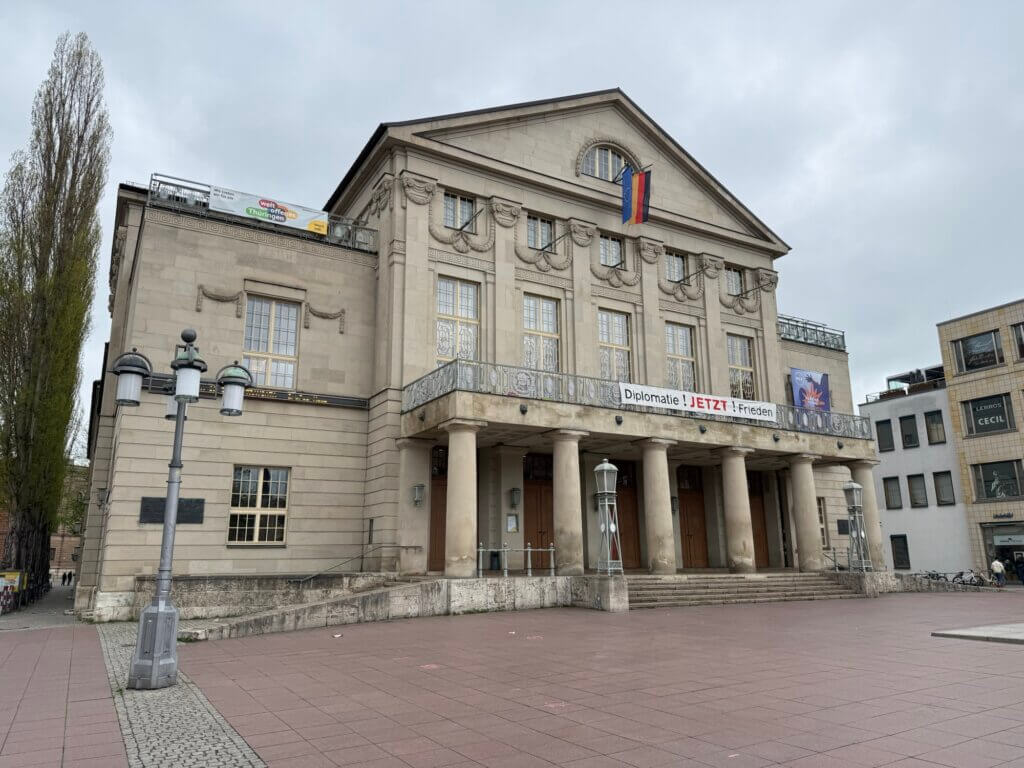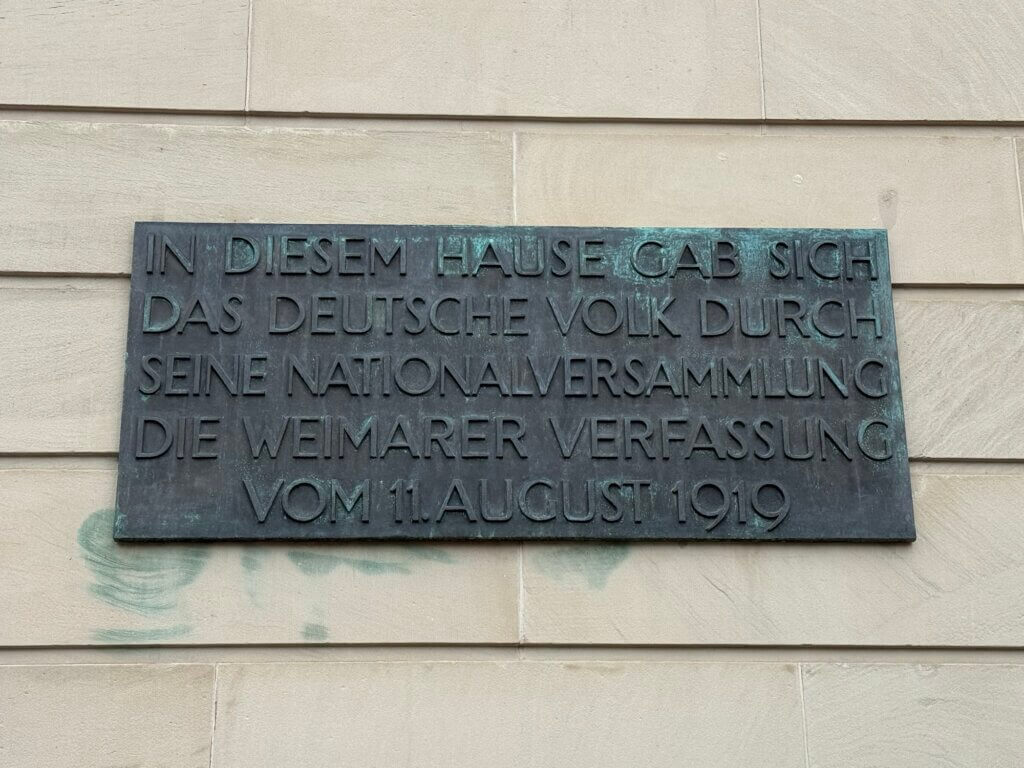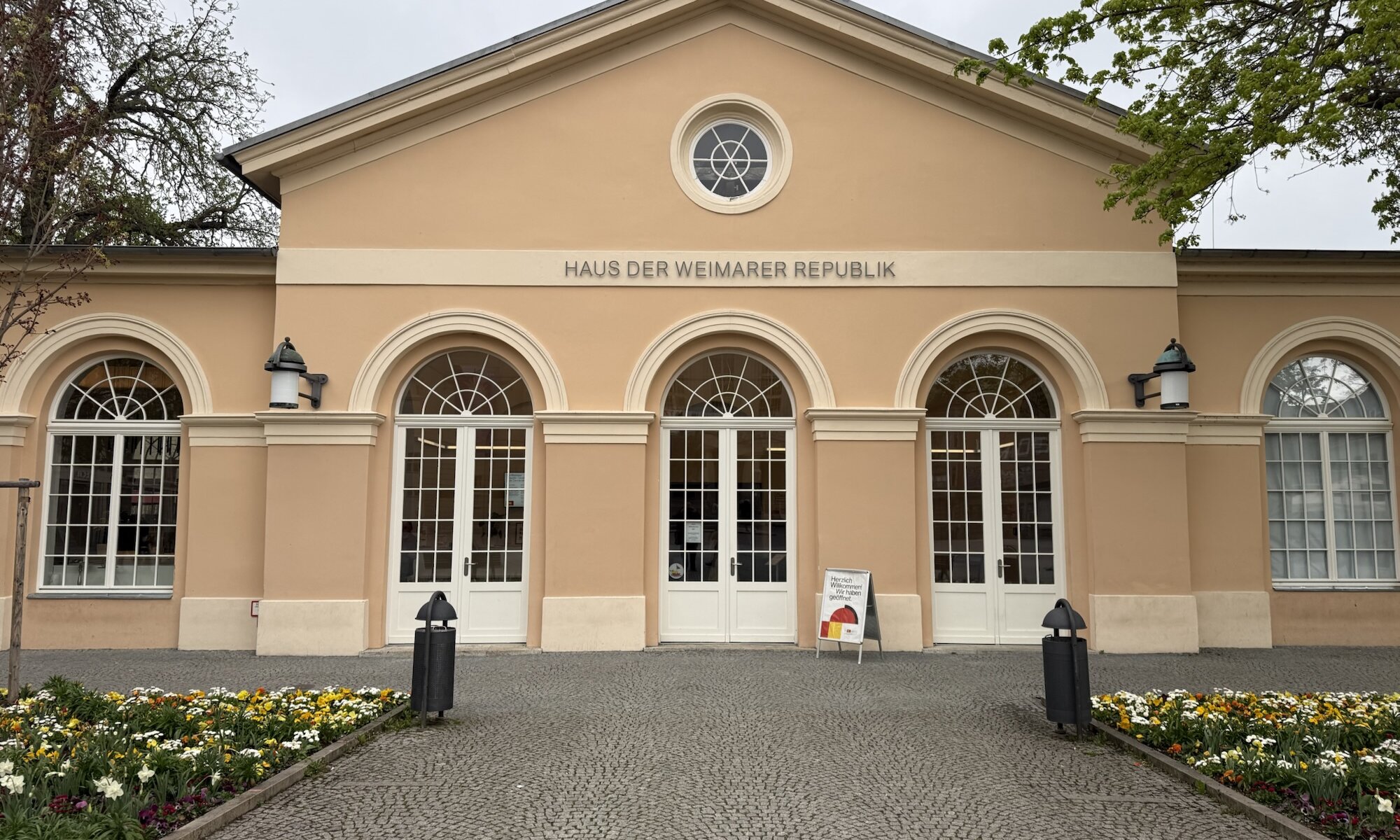The Haus der Weimarer Republik in Weimar is a museum dedicated to the history and legacy of Germany’s first democracy, the Weimar Republic. Located directly on Theaterplatz, it stands opposite the Deutsches Nationaltheater, the very place where the national assembly met in 1919 to draft and adopt the new democratic constitution. Visitors to the museum can explore interactive exhibits, original documents, photographs, and multimedia installations that vividly illustrate the turbulent years of the Weimar Republic, from its hopeful beginnings to its tragic end.



The Weimar Republic was the German state from 1918 to 1933, marking the first time Germany became a parliamentary democracy after centuries of monarchy. It was established in the aftermath of World War I, following the abdication of Kaiser Wilhelm II and the November Revolution, which swept away the old imperial order. The new government was tasked with creating a constitution that would lay the foundation for a modern, democratic state, granting civil liberties and political participation to its citizens.
Weimar was chosen as the site for the national assembly and the drafting of the constitution because Berlin, the capital, was considered too unstable and dangerous due to ongoing political unrest and violence at the time. The delegates gathered at the Deutsches Nationaltheater in Weimar, a city associated with German culture and enlightenment, which symbolized a new, peaceful beginning for the nation. The constitution was adopted in August 1919, and the period that followed became known as the Weimar Republic.
Despite its progressive constitution and cultural achievements, the Weimar Republic faced severe challenges, including economic crises, political extremism, and social unrest. Ultimately, the republic came to an end in 1933 when Adolf Hitler and the NSDAP seized power, dismantling democratic institutions and establishing a fascist dictatorship. This marked the tragic failure of Germany’s first experiment with democracy, a story powerfully told within the walls of the Haus der Weimarer Republik.
Haus der Weimarer Republik
Weimar
Germany
Loading map...


